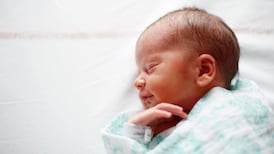Less than a third of recently recorded coronavirus clusters were in workplace settings, according to the latest outbreak data from the Health Service Executive (HSE).
Overall, there were 114 official outbreaks in the week ending July 31st, of which 41 were in workplaces, the HSE’s lead for testing and tracing Niamh O’Beirne told The Irish Times.
About half of the 41 workplace outbreaks recorded in the final week of July occurred at construction sites, manufacturing plants or food processing factories, Ms O’Beirne said.
However, 50 per cent of those were recorded in “general workplace settings”, and some of these clusters arose in office environments.
“Even those who are vaccinated, if you are symptomatic you should not go into a workplace . . . Vaccinated people can have mild symptoms and can still transmit the virus, so we are trying to get people to be really careful,” she explained, adding that transport to and from work is a challenge.
Close contacts
Ms O’Beirne stressed that the vast majority of Covid infections are transmitted via close contacts in family or social settings and are not recorded in the official outbreak report. Therefore there is a limit to how much intelligence can be derived from the HSE’s outbreak data.
Second-highest on the list of traced outbreaks were “social gatherings” in unclassified settings, which Ms O’Beirne said included barbecues or events held outside of hospitality venues. There were 12 of these outbreaks in unclassified settings in the final week of July.
Weddings and funerals, recorded under religious settings, accounted for four outbreaks comprising 35 cases. The smallest of these outbreaks had just two connected cases, while the largest had 17, which Ms O’Beirne noted was “quite high”.
Recently there has been an increase in sporting activity or fitness-related recorded outbreaks, with eight recorded in the most recent report, Ms O’Beirne said.
Flight manifestos
Foreign travel accounted for 7.5 per cent of recent cases. Cases linked to international travel are currently being tracked by 12 full-time contact tracers, she said. Tracking down close contacts involves acquiring flight manifestos and passenger locator forms to trace passengers sitting within two rows of a confirmed case. However, the positivity rate is low, she said, and a person sitting within two rows of an infected traveller has less than a 2 per cent chance of catching the virus.
People below the age of 44 make up 83 per cent of recent Covid cases, while those who have been fully vaccinated account for 23 per cent, she said.
In March, the HSE introduced seven-day contact tracing for people who did not know the source of their infection. This was reduced to 48-hour tracing when daily cases surpassed 600.
Ms O’Beirne said it is “not possible or reasonable” to contact trace all community transmission cases when there are more than 2,000 daily recorded infections, as there are “so many environments” in which the person might have caught the virus.
Only 20 per cent of people diagnosed with Covid do not know where they acquired the infection, she added. With the current level of infections, the focus is on “forward tracing” to prevent further spread, Ms O’Beirne said.








